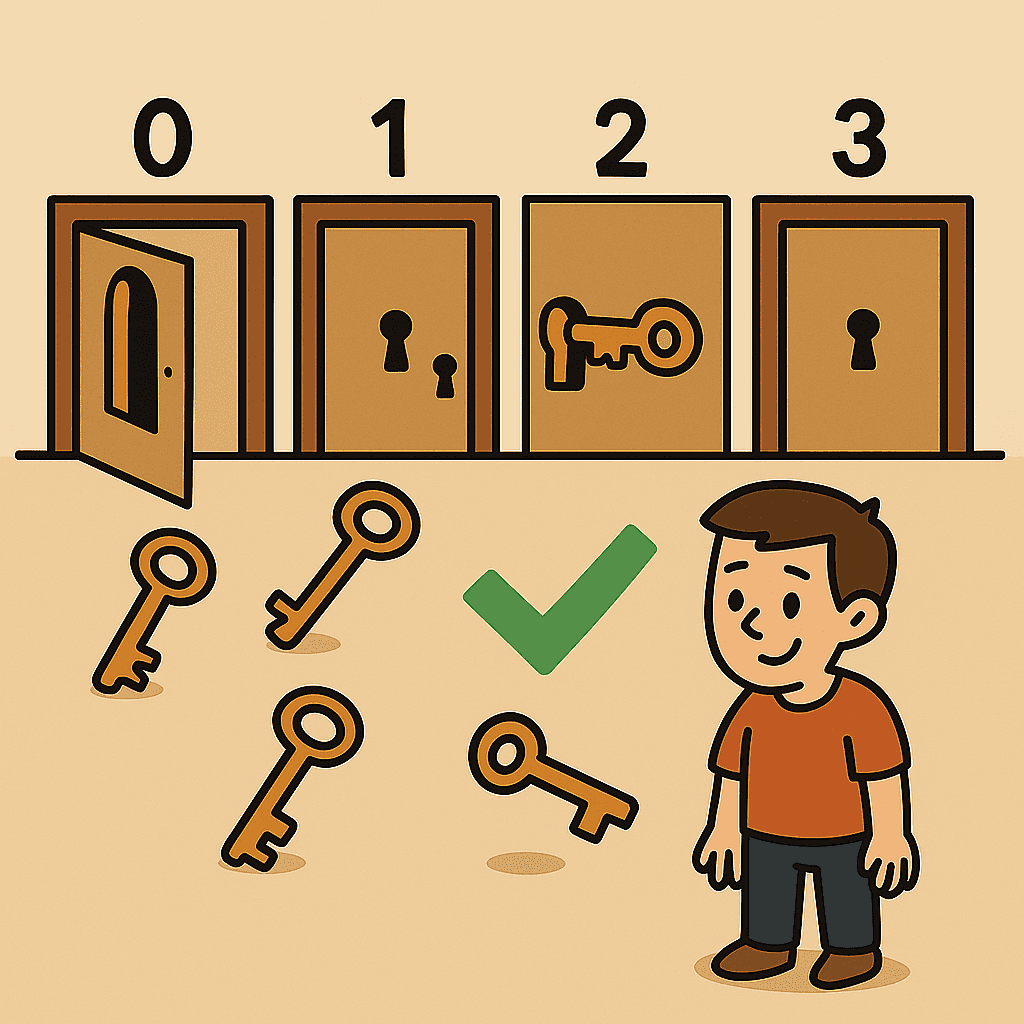Table Of Contents
link: https://leetcode.com/problems/keys-and-rooms/
There are n rooms labeled from 0 to n - 1 and all the rooms are locked except for room 0. Your goal is to visit all the rooms. However, you cannot enter a locked room without having its key.
When you visit a room, you may find a set of distinct keys in it. Each key has a number on it, denoting which room it unlocks, and you can take all of them with you to unlock the other rooms.
Given an array rooms where rooms[i] is the set of keys that you can obtain if you visited room i, return true if you can visit all the rooms, or false otherwise.
🧠 Example to Understand
Input:
Input: rooms = [[1],[2],[3],[]]Output: trueExplanation:We visit room 0 and pick up key 1.We then visit room 1 and pick up key 2.We then visit room 2 and pick up key 3.We then visit room 3.Since we were able to visit every room, we return true.

Steps
- Enter Room 0 → get Key 1
- Enter Room 1 → get Key 2
- Enter Room 2 → get Key 3
- Enter Room 3 (no keys, but that’s okay)
We visited every room → ✅ Output: true
Input:
Input: rooms = [[1,3],[3,0,1],[2],[0]]Output: falseExplanation: We can not enter room number 2 since the only key that unlocks it is in that room.

Steps
- Enter Room 0 → get Key 1 and Key 3
- Enter Room 1 → get Key 3, Key 0, Key 1 (we already have these)
- Enter Room 3 (no keys)
Simple Graph Representation
0 -- 1 -- 2| \3 4
0 -- 1 -- 2|3 4
✅ Approach 1: BFS Solution (Queue Exploration)
def canVisitAllRooms(rooms):visited = set()queue = [0] # Start with room 0while queue:room = queue.pop(0)if room not in visited:visited.add(room)for key in rooms[room]:queue.append(key)return len(visited) == len(rooms)
How it Works
- We explore rooms gradually.
- Every time we enter a room, we pick up all its keys.
- We keep unlocking rooms until no new rooms can be opened.
✅ Approach 2: DFS Solution (Recursive Exploration)
DFS is another way to explore connected rooms — we go deep into rooms as soon as we get keys.
def canVisitAllRooms(rooms):visited = set()def dfs(room):if room in visited:returnvisited.add(room)for key in rooms[room]:dfs(key)dfs(0) # Start from room 0return len(visited) == len(rooms)
How DFS Works
- Start in Room 0
- Recursively visit every room whose key we find
- Stop when there are no more new rooms to unlock
🧮 Complexity Analysis
| Method | Time Complexity | Space Complexity | Reason |
|---|---|---|---|
| BFS | O(n + keys) | O(n) | We queue each room and key once |
| DFS | O(n + keys) | O(n) | Recursive stack + visited rooms |
Both solutions are efficient and acceptable.
